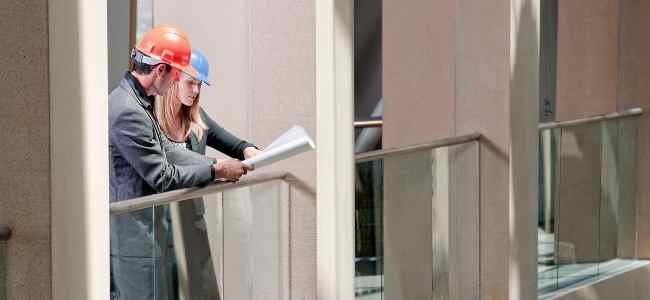The ITE usually generates many doubts in the neighboring communities, since, sometimes, the owners do not know who should be in charge of it or how it should be done. Below we explain all the details of this inspection so that your building passes this test successfully.
The Technical Building Inspection (ITE) is a technical examination of the construction of a property that reports on its general state of conservation, the degree of accessibility and its energy certification. Its objective is to verify that the building is in good condition and that it meets the necessary conditions for its use.
Issues to Consider During and After the Inspection
This technician is in charge of evaluating the conditions in which the building in question is located. The contracted architect or surveyor carries out the inspection and, specifically, checks the condition of the facades and their elements (both interior and exterior), the foundations and the structure, as well as the roofs, roofs, stairs, elevators and the condition general of the premises of the property (sanitation network, electrical installations, etc.).
Once the examination is carried out, the technician will issue a report indicating whether the inspection of the property is favorable or not. If the building does not pass said control, the contracted professional must indicate in the report the reasons and the improvements that must be carried out so that the necessary security conditions are met. Again, it will be the responsibility of the neighborhood community to hire a professional such as Sydney Building Inspections to carry out the reforms, in addition to assuming the cost of these. Finally, for the building to comply with the regulations, the property must be inspected again after making the necessary improvements. And once the inspection has passed, you must undergo this examination every ten years.
What does the technician check in a Technical Building Inspection?
Checking the safety, stability and consolidation conditions of the building is the objective of this inspection. In other words, it is about confirming that the construction in question complies with the safety, health, accessibility and decoration requirements established by law.
To carry it out, the expert responsible for the analysis performs a visual inspection of different elements such as:
- Building structure and foundation
- Water tightness (roofs, eaves and roofs)
- Facades
- Party walls and other walls (cornices, cantilevers …)
- Walls
- Forged
- Plumbing and sanitation facilities.
Despite the fact that the Technical Inspection of the Building is carried out visually, in the event that deficiencies are detected, the professional has to propose all the tests that he considers necessary for the affected elements.
How much does it cost to pass the ITE?
Having clear the basic aspects, it is time for one of the questions that generates the most doubts among the communities of owners: how much does it cost to pass the ITE?
Unlike other procedures in which the administration intervenes, the price to pass the ITE is not regulated, so it will be the professional who performs it who establishes the cost of their fees.
Issues such as the age of the building or the number of neighbors can affect the final amount. However, it will be the rehabilitation work resulting from the ITE that will involve the largest investment by the owners. These repair or maintenance tasks are the result of the qualification obtained in the report, which can evaluate the building as:
- No shortcomings.
- With slight deficiencies.
- With serious deficiencies.
- With very serious deficiencies.
From there, in order to obtain the aptitude certificate from the administration, possible deficiencies must be corrected so that the person in charge of the Technical Inspection can guarantee its fit status and request the certificate from the administration.


